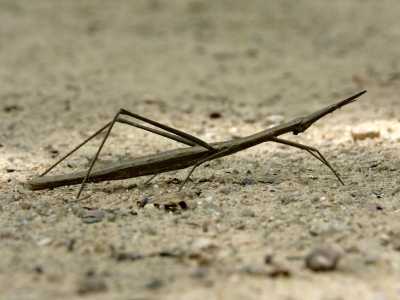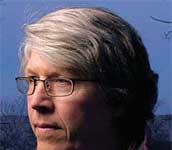 “[T]he book is already ‘dead’ (or superseded) if by ‘alive’ you mean that the institution in question is essential to our continued commerce in ideas” – Stuart Moulthrop, ‘You Say You Want A Revolution?’
“[T]he book is already ‘dead’ (or superseded) if by ‘alive’ you mean that the institution in question is essential to our continued commerce in ideas” – Stuart Moulthrop, ‘You Say You Want A Revolution?’
As a book technology researcher in an English department I often have to talk to roomfuls of archivists, literary enthusiasts, and downright bibliophiles about the joys of digitisation. It can be a tough sell. If I’m feeling brave I like to kick off with that great quote above and get ready to duck. You see I don’t think they always understand that I’m on their side; when I say that books are no longer essential I don’t mean we should go all Fahrenheit 451. No, I mean that when we do hold on to them, and for dear life, we’ll be doing it because we care, not because we have to. This seems to be much better than assuming that they’ll always be around, and that they’ll always be our most effective tool for receiving information. But perhaps I should just be grateful that people still care about books. As soon as that passion can be at least partially turned from pages to screens with the right device then we’ll suddenly have a lot of Telereaders in our midst…
In the meantime people’s continuing obsession with bookish bodies fascinates me. Reading Henry Plotkin’s Darwin Machines and the Nature of Knowledge (Amazon link) I realised that if bodies are the result of evolution, then evolutionary theory might be a useful way to interrogate books. In this piece I’d like to begin to look at books as evolved creatures and suggest that they don’t just hold knowledge, they are knowledge.
First let’s consider a key aspect of Plotkin’s book: his attempt to move the debate as to what constitutes ‘knowledge,’ from philosophy to biology. Knowledge, as we predominantly (or ‘common-sensically’ as Plotkin would have it) envision it, can be described as a state in the brain matching a state in the world. For instance I ‘know’ my way to work, I’m able to find my way there because I know where the building which houses me for the best part of my Saturday exists in relation to the warmth of my bed; I have a knowledge of the route, a mental map which conforms to a reality in the world. Plotkin takes this conception of knowledge, a matching of brain states to world states, and extends it to the evolution of bodies, because bodies conform to the world in much the same way. When a stick insect reaches maturity it resembles a stick, and this camouflage represents a genetic ‘knowledge’: a state in the insect (looking like a stick) maps onto a state of the world (the existence of sticks in the environment in which the insect lives). Our eyes, our opposable thumbs, our ability to develop language and articulate it, any of our adaptations which have been selected by the survival of our ancestors, all of these are forms of knowledge akin to my knowing my way to work: states within matching states without. This notion has something rather appealing about it, that bodies ‘know’ like minds ‘know.’ Every adaptation, for Plotkin, is a knowledge of the environment that produced it. So how, as I always seem to find myself asking, might this apply to books or digital reading?
It’s at this stage that the Universal Darwinism kicks in: I think that books are the products of evolutionary effects. Evolution – to describe it in a post which doesn’t descend into complete tl;dr fodder – requires variations which are able to be tested and replicated. For our stick insect the bugs that came before her were a mix of more or less stick-like insects. The fact that she exists today shows that her ancestors were the most stick-like, because the gene pool of insects generated billions of more or less stick-y forms over time, through various mutations, and those that most resembled sticks, those which were better camouflaged, avoided being eaten and survived to reproduce and pass on some of their stick-like natures to their offspring. Our current stick insect, therefore, is the sum total of the biological knowledge of the world acquired by her ancestors – their bodies found out what sticks looked like by avoiding being eaten, and all so she might resemble one herself.
Artefacts for storing words, too, have varied over time, from clay tablets to Kindles – mutations in form and size, bindings, typography, prices, printing speeds, paper or digital, variations of all possible parameters have been generated. And we are the environment for books, we cause the selection, we the readers are the hungry lizards or birds waiting to eat the badly camouflaged stick insects, and we ensure that our media artefacts become ‘fitter.’ In a twist it is our consumption of books, rather than our leaving them be which ensures the reproduction of their different ‘genes’ (or memes if you will), but otherwise this seems to map quite well. When a book is the right price, when it can fit in your bag and survive the journey, then you’re more likely to buy a book like that again, the form grows fitter as the demand for it rises. But when a book is too expensive it doesn’t get read, the same if it falls apart or the font’s unreadable, if it’s too large or too heavy. If it stays unread because of its physical flaws then that kind of book is far less likely to appear again. It might as well have been eaten.
This view of books would mean that if all adaptations represent knowledge of an environment then books do not just contain knowledge, they are knowledge, manifesting the history of their ancestors’ interactions with the humans which held them. We may feel instinctively uncomfortable in thinking that books somehow possess knowledge, but I’m not trying to say that they are conscious of their acquirements, anymore than stick insects choose to reflect an aspect of the world. A book’s knowledge is directed by evolutionary effects, not by guided learning, but this doesn’t diminish the fact that they are the embodiment of a tumultuous past; in every book there is a fragment of every book that toiled before it. Maybe this is why e-readers can get it so wrong in their competition for the advanced and the exotic – they’ll only ever evolve, they can never be produced at first pass. Bound books are the knowledge of a hard fought struggle, and not to learn from them places our new technologies back with the typographic amoebas.
Editor’s Note: Picture credit to Christian Meyn. Here is what Matt Hayler has to say about himself: I’m currently a PhD student at the University of Exeter researching the effects of the digitisation of the written word. I’m particularly interested in why many have an intuitive dislike for the digitisation of printed media, and I’m currently trying to locate the potential roots of these feelings in our evolutionary history and our current psychology. Haptics, the study of human interaction via touch, is a crucial but often overlooked part of the digital reading debate, and with the emergence of ‘tablet’ computing I believe we must better understand the ways in which we touch the world if we are to get the most out of our new technology. My blog’s here – http://4oh4-wordsnotfound.blogspot.com/ or you can follow me on twitter (@cryurchin).






























Terrific post. Does it link to the idea of ’emergence’?
@dowee – Thanks very much. I wasn’t positing an explicit link to emergence (wiki- http://bit.ly/qP5Bs), but there’s definitely scope to think of books, or maybe rather ‘texts’ (in the theoretical sense) in those terms I think. I go a bit closer to that in the original post this piece comes from (http://bit.ly/8huBhI); the way in which we produce incredibly complex texts as readers does seem to emerge from seemingly simple origins, at base the characters of the scripts we use being able to describe an incredible, seemingly infinite array, of thoughts. Also, part of that production of texts is, for me, linked to the bodies that script inhabits, which again are seemingly simple composites which have the capacity to produce an unpredictable complexity of meaning and form.
_m
Yes, fascinating post, Matt. I’d like to see more posts along these lines. Thanks for putting it up.